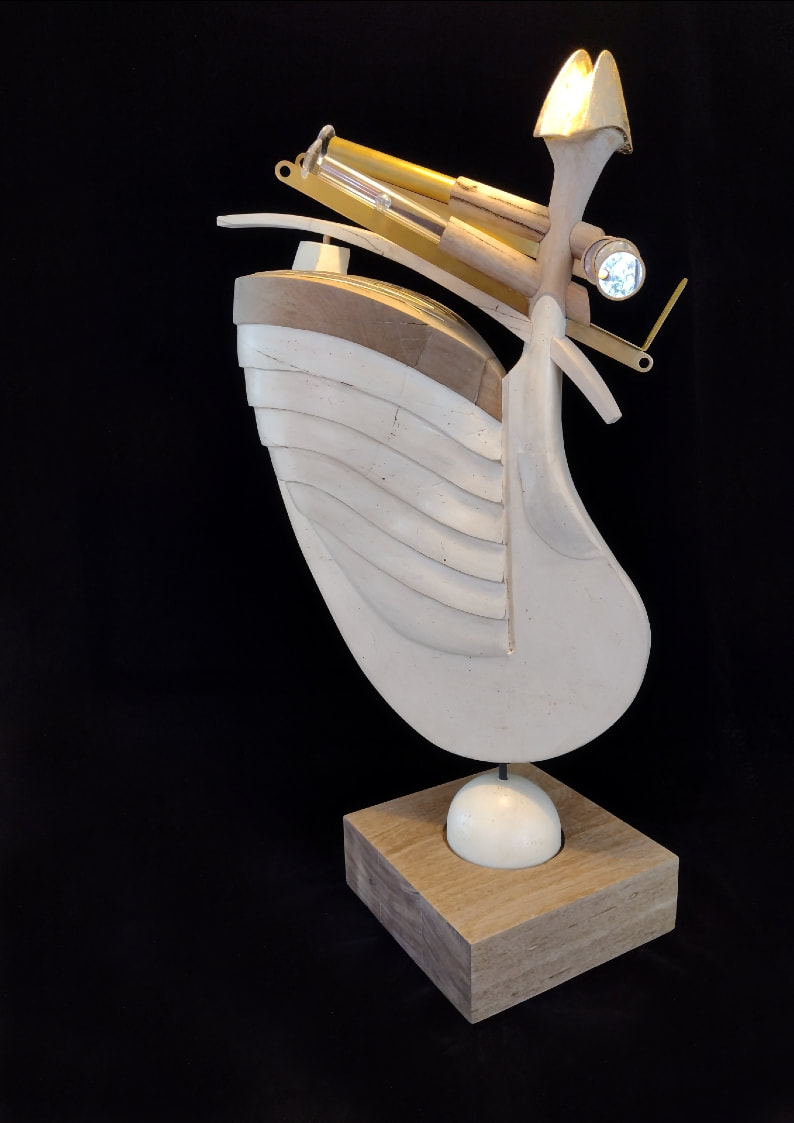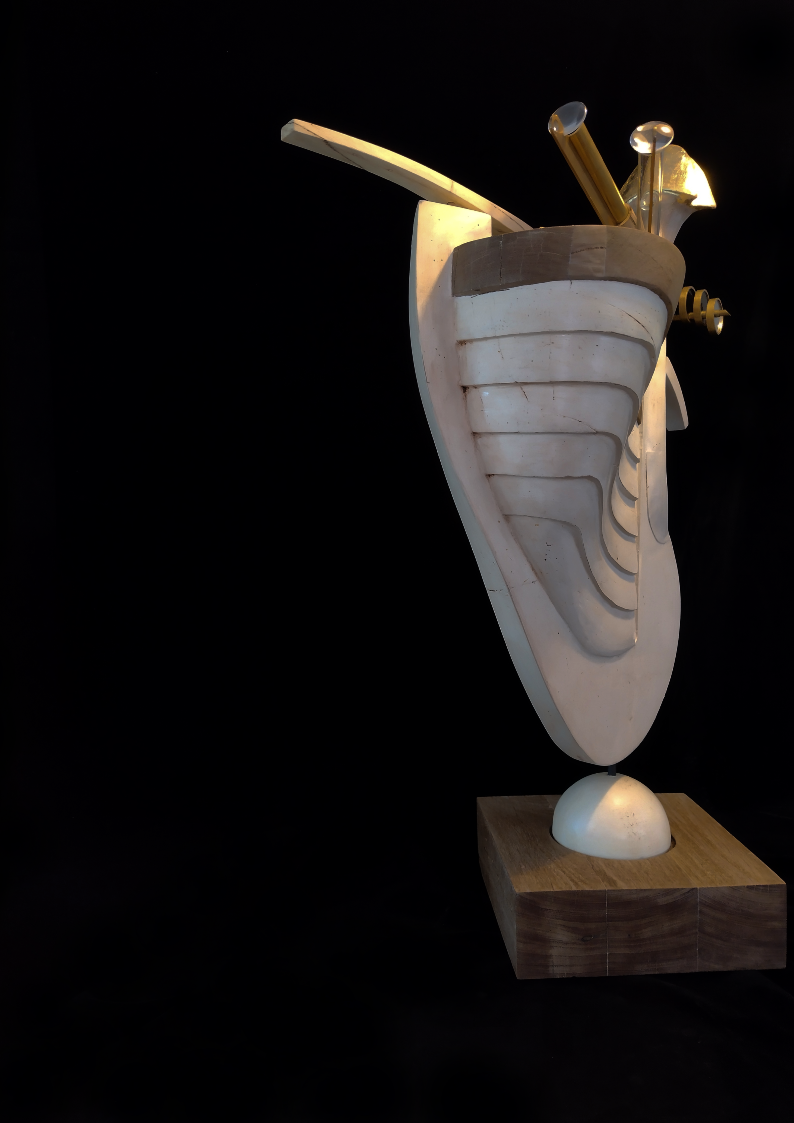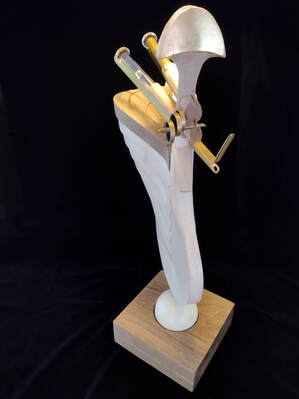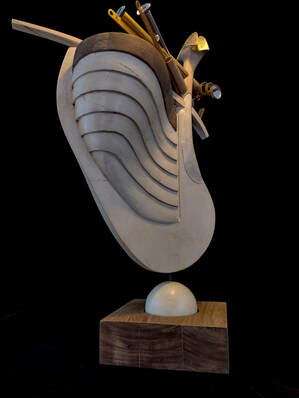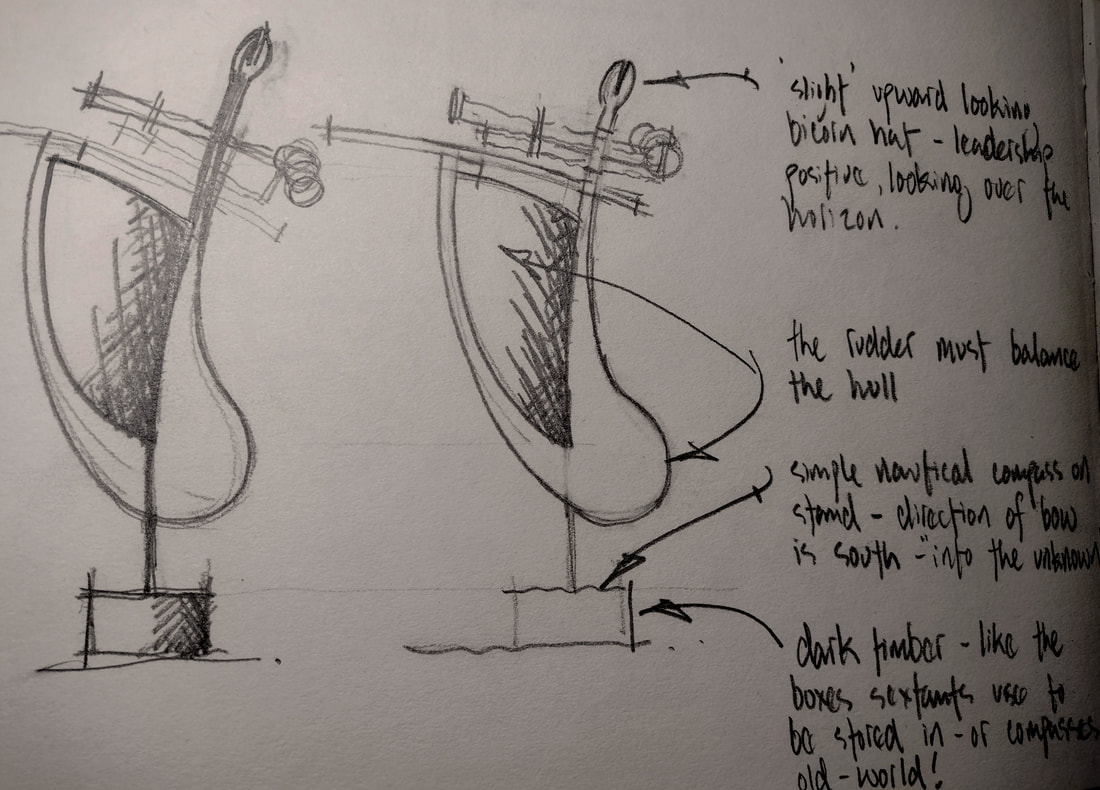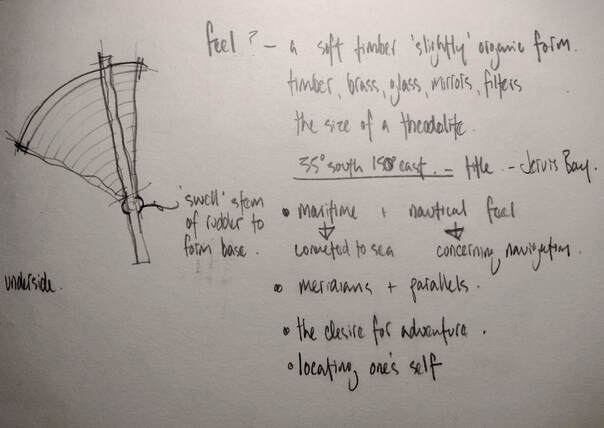35°south, 150°east 2022
recycled hardwood, brass, glass, acrylic paint, gold leaf
960 x 700 x 400mm 24.4kg
35° south, 150° east is a shortlisted competition entry in which the brief is to represent the Jervis Bay Maritime Museum's "Halloran Collection". The collection contains a diverse range of scientific and maritime instruments, artworks and "bits and pieces". Prominent surveyor and developer, Henry Halloran started the collection in 1890 and his son kept adding to it until the late 1980's.
Inspired by the collection’s painting of George Bass entering Jervis Bay in his tiny whaleboat in 1797, I felt in awe of Bass’ achievement. I sensed Halloran felt the same way, not only of Bass, but of other maritime explorers and sailors. He showed this in his collection of maritime ephemera.
The work expresses Halloran’s interest in location - placement and positioning and, maritime exploration. It embodies “a desire for adventure”, something that Bass had plenty of! The gilded bicorn hat is the figurehead of British colonialism, upright and confident. The tiller always points to bow.
There are hints of precision navigational instruments, such as sextants, telescopes and spirit levels, pared back to their minimal “brass and glass” forms. These hints are contained in a vessel which in plan is one sixth of a circle - the measurement of a sextant, and embodies the lines of latitude and longitude – the geometry of location.
Inspired by the collection’s painting of George Bass entering Jervis Bay in his tiny whaleboat in 1797, I felt in awe of Bass’ achievement. I sensed Halloran felt the same way, not only of Bass, but of other maritime explorers and sailors. He showed this in his collection of maritime ephemera.
The work expresses Halloran’s interest in location - placement and positioning and, maritime exploration. It embodies “a desire for adventure”, something that Bass had plenty of! The gilded bicorn hat is the figurehead of British colonialism, upright and confident. The tiller always points to bow.
There are hints of precision navigational instruments, such as sextants, telescopes and spirit levels, pared back to their minimal “brass and glass” forms. These hints are contained in a vessel which in plan is one sixth of a circle - the measurement of a sextant, and embodies the lines of latitude and longitude – the geometry of location.
